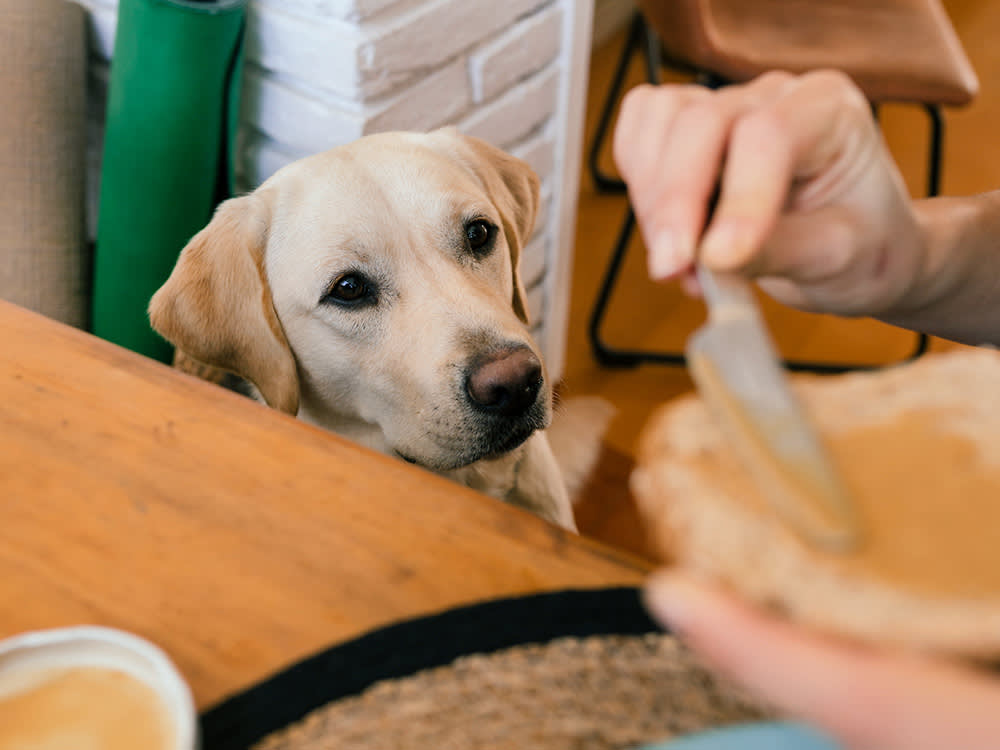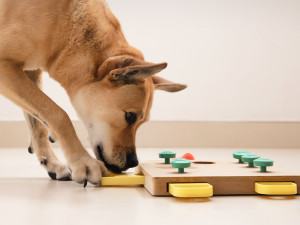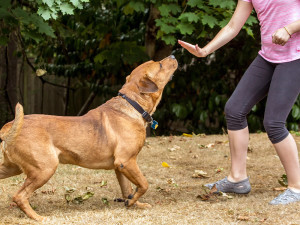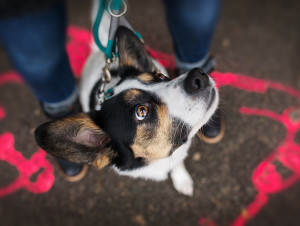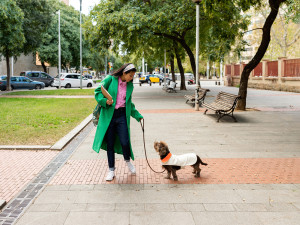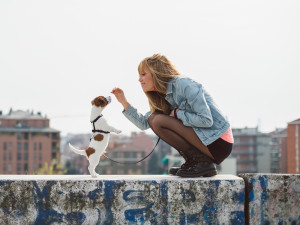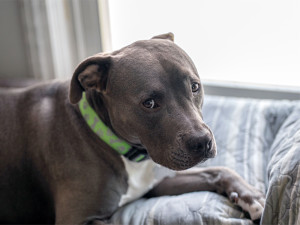How to Deal With Your Dog’s Begging Problem
It's time to reframe the situation.
So many people are frustrated when their dogs beg at the table because this behavior detracts from an optimal dining experience. And no offense to your adorable pup, it can be unappetizing to chow down on your meal in front of a drooling dog. You may even end up eating faster, just to get through dinner so the barking or whining and puppy-dog eyes stop. Nobody needs the misery of feeling overstuffed after speed-eating.
Dogs can become frustrated, wondering if or when they will receive a special treat from you. It’s awkward to have a dog begging at the table when you have guests. Luckily, there are ways to deal with a begging dog so everybody is happy.
Stop feeding your dog from the table.
It’s essential that they learn this behavior is not successful for them. If dogs come up to you at the table, and you share some food from your plate with them, do you think they will come back and try again? Of course they will. Dogs will do whatever works for them to get what they want. The simple behavior of wandering over to the table and looking up at you expectantly is definitely working for them if the result is a piece of steak or chicken.
In technical terms, receiving food is a positive reinforcement for the behavior of approaching the table and giving you their attention. Positive reinforcement makes the behavior more likely to occur in the future, so a dog who has benefitted from begging is a dog who will continue to beg.
How much do you spend on your pet per year?
OK, let’s say you wait and wait before giving your dog any food, but finally toss them the last of your meal. Maybe you give them food only every once in a while. Unfortunately, you are reinforcing not only the begging behavior itself, but also your dog’s persistence at it. Once a dog has learned that persistence pays off, it is even more challenging to change their behavior. To put a stop to a dog’s begging, it is essential that you completely stop giving them food from the table, rather than do it occasionally.
Make sure your dog has something to do while you eat.
It’s helpful to offer your dog something to eat or chew on when you are eating. If mealtime predictably means a positive experience for them, they will be happy with that and less likely to try to get a bit of your meal. For this strategy to work, it’s important that your dog has something to do during your dinner and that they can count on this happening. Options include a real boneopens in new tab, a Kong stuffed with peanut butteropens in new tab or other high-quality treats, a pig ear, a cow hoof, a food puzzle with great treats in it, an antler, or something similarly worthwhile from your dog’s point of view. Get in the habit of asking your dog to do something and giving the item to your dog in a spot away from the table.
The “something to do” can also be simply eating their own dinner, maybe out of a food puzzle so they won’t be done in 2.4 seconds. It can also be attention from someone if not everyone in the household is eating at the same time. Receiving a massage or playing tug will distract many dogs from what’s going on at the table. If your dog isn’t one of them, the person spending time with them while other people eat should go outside to play or to another room for petting time.
Reframe your dog’s behavior as a “stay” in disguise.
Think of the begging behavior, which is often so persistent, as the first step toward a perfect “stay” and gradually teach your dog to perform that staying behavior in a different place — perhaps on the other side of the room instead of right next to the dinner table, or on their dog bed. This perspective is classic dog trainer behavior, because we so frequently use a method called “shaping” to teach dogs various skills.
Shaping is teaching an individual to perform a behavior by reinforcing successive approximations of the behavior you want. With dogs for example, it’s common to shape the behavior of ringing a bell on a doorknob to be let outside. The steps that a trainer can reinforce to teach this behavior include: going into the room with the bell, going closer to the bell, looking in the direction of the bell, touching the bell, and using enough force to make the bell move even a little. Eventually, the trainer will reinforce the dog for ringing the bell.
Dog trainers are always on the lookout for behavior we can build on to get a trick (or some other desirable behavior) we want our dog to perform. A key step is recognizing that all-important first step in the series of approximations. So, a dog who lifts their paw can easily be taught to shake or wave, and a dog who likes to lie on their side can be taught to lie in the “belly-up” position because in both cases, they are already halfway there.
Although begging at the table is not a desirable behavior in most people’s minds, dog trainers see it as the first step toward a “stay” in a good spot. Dogs who have the persistence and patience to remain in place at the table are performing a gorgeous “stay.” But shaping can help make it a “stay” in the spot where you (the person) prefers they stay. All that remains is to reinforce the dog for this behavior at increasing distances (starting with just a few inches away from the original location) from the table until the dog is doing it on the other side of the room or even in another room throughout the entire meal.
When it gets down to it, your dog is not so much begging as they are doing a “stay” that should make any pet parent proud. You should definitely mention this to anyone if they have the nerve to criticize the behavior of the love of your life.
